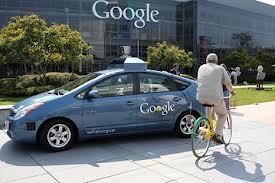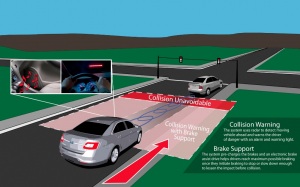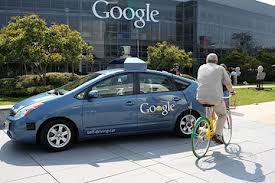Three American states have legalized self-driving cars. Arizona, Florida and now California. They are the first to allow this technology to share streets with human-driven vehicles. Called “the most transformational technology that will impact roadway transportation,” by Lawrence Burns, General Motors head of research and development, manufacturers expect mass produced driverless technology to become mainstream within the next decade.

Automobiles today are computers and sensors wrapped in a steel, aluminum or fiberglass frame. High-end model features such as the following:
- Drift detection and correction
- Forward-seeing radar with automatic braking
- Cameras for both front and rear views
- Laser detectors for identifying traffic hazards
- GPS for location and destination routing
- Adaptive cruise control
- Parallel self-parking
- Inter-vehicle communications
are becoming available on mid-range and lower priced automobiles. Today’s vehicles contain millions of lines of software code with sophisticated databases that can synthesize information rapidly from all the sensory input on board and make instant decisions.
Current legislation on self-driving vehicles require a human in the driver seat for now. But it is only a matter of time before we start to see vehicles running in autopilot because this technology will ultimately save both lives and energy consumption. The American Automobile Association estimates that 90% of the vehicle crashes occurring annually are in part caused by human driving mistakes. A U.S. highway traffic safety study recently concluded that vehicle-to-vehicle autonomous communication could cut down the number of crashes by 79%.
Currently Ford has developed a modified WiFi and GPS system that broadcasts a signal 10 times per second showing a vehicle’s position and speed in relation to other vehicles around it. If a collision is imminent the system sets off an alarm. Another technology, DSRC, short for dedicated short range communication, can be used to manage traffic flow through intersections so that all vehicles on approach can cross without crashing into each other.

Scania, the Swedish truck manufacturer, has been developing a wireless network system for inter-vehicle communication to allow trucks to convoy with a lead truck closely followed by as many as six or seven others. The system uses GPS to do routing, obtains real-time information on road conditions ahead, communicates with traffic lights to minimize braking, comes with adaptive cruise control, and through platooning reduces fuel consumption for those trucks following the leader. The vehicles maintain a 25 meter (about 82 feet) distance between them but the goal is to get them even closer to decrease drag and lower fuel consumption by as much as 20%.

Lockheed Martin has been developing a similar system for the American Army. Called CAST, short for Convoy Active Safety Technology, the system attaches to a truck to enable it to drive itself to a programmed destination while keeping in formation with other convoy partners. The system is designed to allow any vehicle in the convoy to assume the lead position should that vehicle be disabled. CAST has more than 12,000 hours of unmanned road testing driving distances of 56 kilometers (35 miles) during daylight and 24 kilometers (15 miles) at night.

Ultimately autonomous vehicles will replace human-operated cars and trucks. The increased safety factor will mean a dramatic reduction in vehicle weight and size. Why? Because much of the weight of automobiles today represents design elements for protecting human occupants from crashes. With the human element taken out of the picture vehicles will shed hundreds if not thousands of pounds in weight. By 2050 traffic congestion will be a thing of the past and deaths from traffic accidents will be non-existent.









